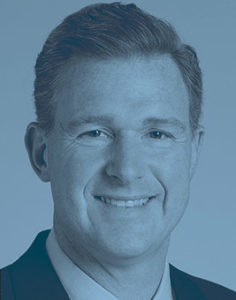
PX: The Rx for Capturing Demand
“When I came into healthcare, I was a bit surprised by how far behind healthcare was. We’ve done a lot to close that gap, but there’s much more to be done.”

Matsen
That’s how Paul Matsen, chief marketing and communications officer at Cleveland Clinic, responded in 2006 when asked what it was like to move from a major airline to healthcare. His comments will sound familiar to anyone who’s been even tangentially involved in conversations about the future of healthcare. After all, much of the discussion about consumerism has been some version of: “If X brand can offer Y type of convenience, why can’t healthcare providers?”
This year, acceleration happened. That positions marketers of healthcare providers organizations with room to either consolidate existing changes or to get the ball rolling on creating the new healthcare experience.
Matsen views the lag in healthcare experience is an issue of integration. Patients, he said, need the ability to manage the way they interact with healthcare from start to finish.
“That’s what expectations are in virtually every industry,” he said. “Think about the airline industry today: You book your flight online, choose your seat, check yourself in, probably tag your own bag, scan your boarding pass and probably get a customer satisfaction survey before you get to your hotel.” Healthcare, he suggested, needs to make similar progress.
Redirecting the ship

Stillwell
Changing course requires understanding root causes. In this case, slow progress in the patient experience domain may be because the incentives and focus have been in the wrong spot. “It’s a systems design challenge,” noted Marquise Stillwell, principal and founder of Openbox. “When the system is only designed for the system, whether that’s insurance or hospitals or doctors, when everyone is scaling to meet the needs of those systems rather than the needs of people, people suffer.”
Fixing that takes one of the primary elements of the art of change: listening.
“For us as designers, it’s always about getting out and talking to real people and building trust from the beginning of the conversation,” Stillwell said.
This is by no means easy. Aligning the right stakeholders is a real challenge with real constraints. The key, according to Stillwell, is starting with the patient and then building the necessary infrastructure, not doing the opposite and backing into the patients. The focus on patients should start “at the first mile,” not once someone is sitting in the waiting or exam room. That’s too late.
Beware the shiny things

Gove
Careful listening help prevent mistakes born out of overenthusiasm. Matt Gove, chief marketing officer at Summit CityMD, noted the risk of shiny object syndrome.
“Healthcare,” he said “is constantly chasing examples in other industries of how to do things, but that usually ends up being more tech centric. It’s more about, ‘Oh, look at this cool thing that they do at Delta.’ Instead, we should ask how and why customers choose us, and then how we can make that journey better for them.”
From there, the tech and tools will become clear. They might even be ones other companies are using. But maybe not. “Often, if you start there, you’ll realize that the solution you were chasing wasn’t the thing that your customers really want or need,” Gove said.
Deliver the info they need
There’s emotional weight to decision making. Healthcare is emotional to begin with, but, as Stillwell noted, increased access to information heightens the emotional investment people have in the moment. Done right, there’s a feedback loop: More information leads to deeper emotional engagement, which requires more careful listening in order to offer even better information. And providing information empowers patients and puts your organization top of mind.
“Healthcare providers are in a unique position to provide trusted content to consumers, and patients and communities rely on us for trusted information,” said Cleveland Clinic’s Matsen said.
The value of that approach has been clear to the Cleveland Clinic through the pandemic, with over 11,500 social media posts garnering 176 million impressions as of mid-August.
“Now that reflects the scale and the size of the Cleveland Clinic’s brand and what we’re able to do,” Matsen continued. “But creating relevant, trusted content is essential. That’s for any provider organization of any scale, whether a small physician practice or a national health system.
At this point, the relationship between marketing and experience should be clear. If marketing owns the message and the content, marketing is integral to the reputation of the organization. Then, the experience people have when they visit for care must match that message. If they match, trust and reputation is enhanced. If there’s a disconnect, you’ll lose ground fast. Therefore, marketing needs to have a hand in making operational decisions so the message matches the reality.
Culture, then reputation
Cultivating reputation through the marketing department allows an organization to stand out and avoid commoditization. Matsen said that Cleveland Clinic’s brand is seen as distinctive certainly because of its innovation and outstanding medical care. But it also comes from the organization’s century-old culture and how that informs their operations and the messages they produce. Going back to his days in the upper echelons of the travel industry, he said, “Airlines fly the same airplanes into the same airports, but why is it that certain airline brands are perceived to be superior than others? It’s the overall experience that they deliver. And a lot of that gets back to their culture and leadership.”
The lesson for marketers? They need to make the case for what they can do: “Healthcare leaders need to develop a better understanding of what marketing and communications means to their organization. That marketing can differentiate your brand, that it can differentiate your patient experience and service offerings,” said Matsen.
Back to the Building Blocks
Throughout our interviews for these articles, our sources kept going back to the importance of implementing digital tools that open doors for patients. As we all know, the pandemic hasn’t so much created new trends as it has reinforced or accelerated existing ones. This is one such example. So, even before getting into the big picture changes and rethinking how a marketing department could operate, providers need to make sure they’ve got the basics covered.
Matsen said that the past few months have reinforced, “…the inexorable move towards a digital first strategy. The importance of digital can’t be overstated. When we look at our national brand today for Cleveland Clinic, the number one way that national patients find out about us for the first time is digital sources – our website, social media and paid search.”
Gove has seen something similar at Summit CityMD: “The basic rules haven’t changed. We don’t generate demand. We capture demand. And so the tools and tactics that we’ve used the entire time – paid search, paid social, sophisticated display networks that get us in front of the right people – we’re still using those tactics and they’re still proving successful.
If you’re wondering whether your organization is well-positioned in the digital space – if it’s getting those basics right – we’d invite you to take our complimentary Digital Maturity Survey. You’ll receive a custom scorecard and, once we close the survey, a benchmark against industry averages.
